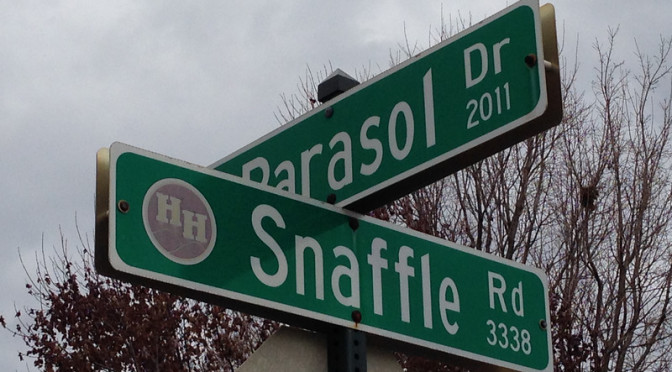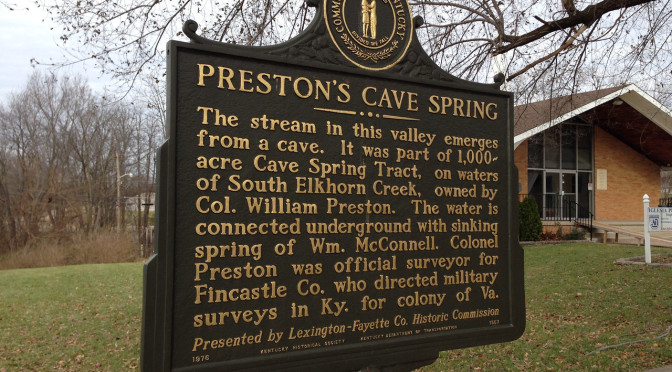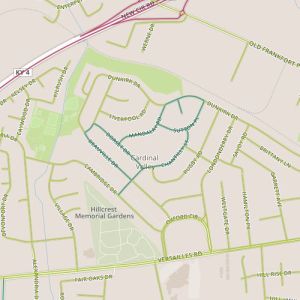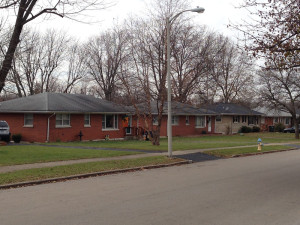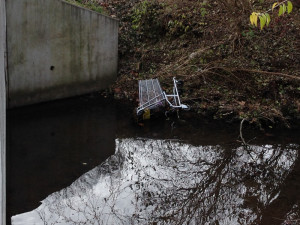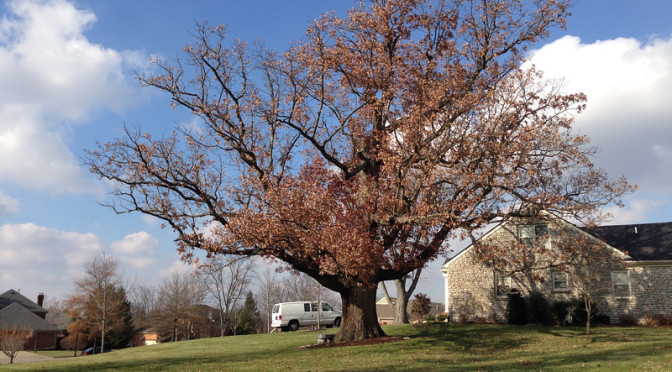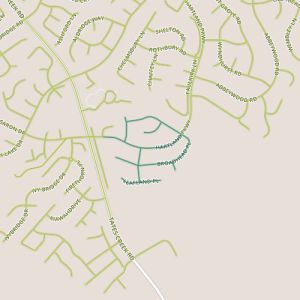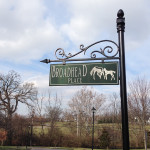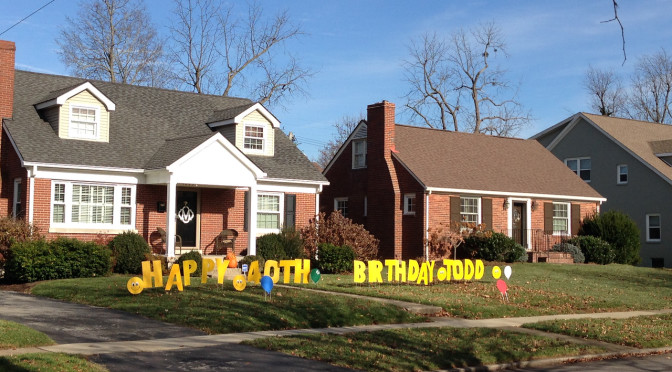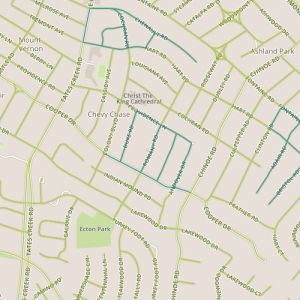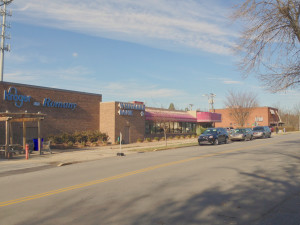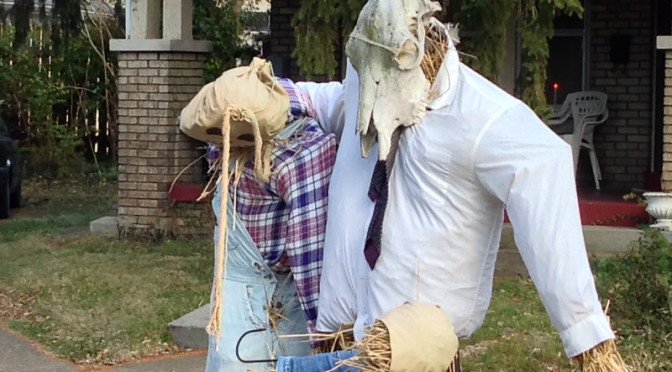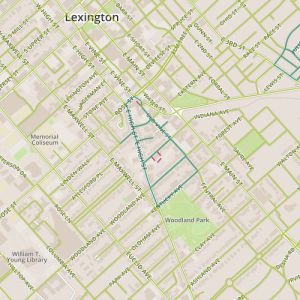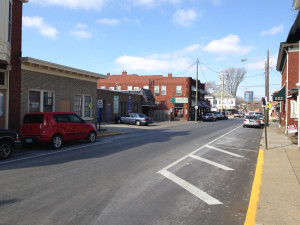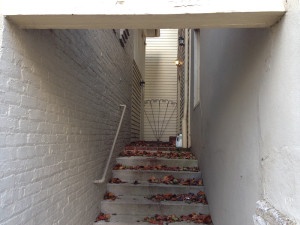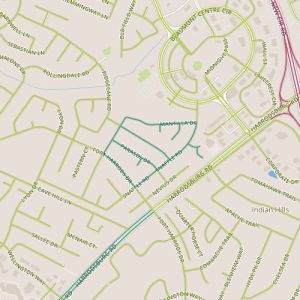 Today’s walk was my first journey to the 40513 zip code, to a neighborhood know as Harrod’s Hill, just west of Harrodsburg and to the south of Beaumont Centre and New Circle Road. Houses here appear large…super-sized versions of the ranch-style houses from many of the 1970’s and 80’s neighborhoods I’ve passed through. Not surprisingly, the older portions (on the Ft. Harrods side) are from the early 1980’s, perhaps representing an early spike in increasing home sizes? The street names in this area were fascinating, too, with esoteric object names from Snaffle and Mantilla to foreign names like Bamboo and Mesa, common names like Mallory and historic names like Webster (behind the Beaumont branch of the Lexington Public Library and next to Literary.)
Today’s walk was my first journey to the 40513 zip code, to a neighborhood know as Harrod’s Hill, just west of Harrodsburg and to the south of Beaumont Centre and New Circle Road. Houses here appear large…super-sized versions of the ranch-style houses from many of the 1970’s and 80’s neighborhoods I’ve passed through. Not surprisingly, the older portions (on the Ft. Harrods side) are from the early 1980’s, perhaps representing an early spike in increasing home sizes? The street names in this area were fascinating, too, with esoteric object names from Snaffle and Mantilla to foreign names like Bamboo and Mesa, common names like Mallory and historic names like Webster (behind the Beaumont branch of the Lexington Public Library and next to Literary.)
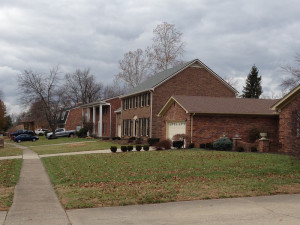
This area repeats a theme that I’ve seen occasionally in other Lexington neighborhoods, a series of long parallel streets, usually a set of three or four, connected at the end but without repeated connections to an arterial street. In a way, areas like this feel more like neighborhoods to me. (I grew up in areas with a very regular street grid, and I don’t doubt this factors into how I feel.) There are benefits to well-connected streets–that is, ones that allow many possible paths between two points. I enjoyed being able to choose between multiple routes in order to vary the scenery, but alternate routes are also helpful if you’re avoiding, say, a mad dog in a front yard or a bully. Street network analysis is fascinating, and hopefully I can work in some of the interesting thoughts I’ve come across on this in the future.
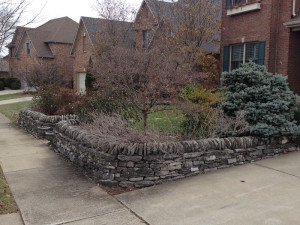
I noticed something unusual in this area–it seemed much more willing to express religious views than I’ve seen in other areas. This was evident not just in holiday light displays (which are just beginning to appear) but in other ways–with license plates, or a biblical passage engraved on a mailbox. This is somewhat unusual for upper middle class neighborhoods which as I’ve mentioned before seem to be somewhat reserved in terms of how residents present themselves to the outside world. I’ve heard people express concern recently about what they perceive as our growing tendency to “self-sort,” to choose neighbors whose views mirror our own. And sure, plentiful outward signs like these could lead some house-hunters to avoid this area or others to favor it, perhaps leading to some self-sorting. But I really appreciated the willingness of residents here to express themselves, and I have to thing that our collective views are so fluid (even a group of people with the same views could have significantly wider range of views after a generation) that self-sorting itself, at least at the neighborhood level, is probably an insignificant issue.
